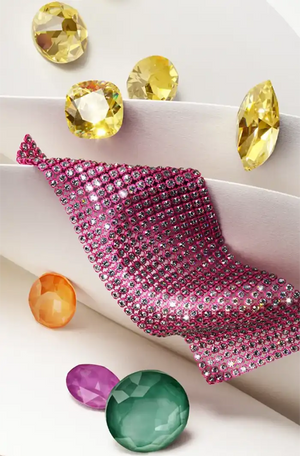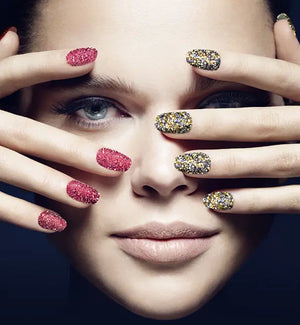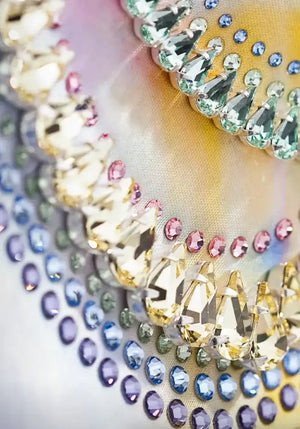
Choosing the Best Metals for Jewelry-Making
Whether you’re indulging in a creative hobby or trying to start a successful jewelry business, the first concern of any aspiring jeweler is going to be their raw materials - aka their metals. Your choice of metals for jewelry making isn’t just an aesthetic one; the right metals can enhance the durability and resistance of your pieces, while cheap or poorly made metals are more likely to break or damage easily, and can even cause skin irritation when worn by you or your customers.
So, what are the best metals for making jewelry? If you’ve already taken a look at our jewelry-making guide, let’s dive into our comprehensive guide on metals.
Why The Right Metals Are Important in Jewelry Making
Aesthetic Appeal
Firstly, the metal you choose is going to greatly influence the look and style of your jewelry, whether you opt for metals with a timeless appeal like gold or sterling silver, or try to keep your budget down by opting for gold plated metals. No matter what you end up choosing, it’s important to select metals that align with your aspirational vision and desired aesthetic of your jewelry, while still taking into consideration the aesthetic concerns of your target audience.
Durability and Longevity
Durability is another key factor in jewelry-making, especially when it comes to selling jewelry to paying customers - your customers aren’t going to want to spend good money on something that breaks with the slightest wear and tear! Again, it’s important to consider your target audience; if you’re making jewelry for kids, you need to factor in the bustling and active lives children often lead; conversely, when making jewelry items for adults, you have a bit more room to add some more delicate touches or details.
Comfort and Hypoallergenic Properties
Finally, you need to consider comfort and allergies when making jewelry: cheaper metals can provoke skin irritations while heavier or more abrasive metals can feel uncomfortable when worn; heavier metals may also not be suitable for larger, intricate pieces that are designed to be worn for extended periods. It’s 100% possible to seek out metals that offer comfort while being kind to the skin, all while remaining within your allocated budget - it’s all about sourcing jewelry findings at affordable prices.
Best Metals for Jewelry Making

Gold
Starting off with the most expensive, gold in all of its various forms is a classic choice for jewelry making, but does often represent a hefty investment. At the steeper end of the budget, pure gold (24K) is highly prized for its rich yellow-gode tones and luxe visual appeal, but on the downside it’s quite soft and malleable, making it less durable. Gold-filled and gold-plated options offer affordability while maintaining the luxurious look, and thanks to their metal alloys, they’re more durable and suitable for everyday wear.
Silver
Now onto silver, there are a number of options to choose from: fine silver (typically 99.9% pure) is a soft and lustrous metal, and is ideal for expensive and high-end jewelry. Sterling silver (typically made with 92.5% silver and 7.5% alloyed metals) is similar to alloyed gold, in that it’s more durable, and more capable of resisting wear and tarnish better.
Steel
If silver and gold are out of your budget range, steel - particularly stainless steel - is a great alternative, known for its strength and durability. Aside from being resistant to rust, tarnish, and corrosion, stainless steel is also hypoallergenic, which is great if you’re looking to make pieces that are inclusive to those with sensitive skin. It’s also almost visually indistinguishable from silver (at least to the untrained eye!), so you’re getting the aesthetic appeal of a silver piece without the fragility of fine silver.
Metals to Avoid in Jewelry Making
So, what metals are best avoided when making jewelry? Here are 3 metals we wouldn’t recommend:
Nickel
Often used in inexpensive jewelry, nickel is one of the more cheap metals for jewelry on the market, but should be avoided primarily due to its potential for causing allergic reactions. Many people have a sensitivity to nickel, which can lead to skin irritation, redness, and rashes - even when simply used in alloys - so it’s best to steer clear.
Lead
Lead is another toxic metal that should be avoided in all jewelry-making, especially when it comes to items that might be worn by children. While lead was once popular in many cheap and older jewelry pieces, studies have found that lead poisoning can actually lead to behavioral problems in children, who are more susceptible to lead poisoning than adults.
Brass and Bronze
While brass and bronze copper alloys have been popular thanks to their gold-like appearance and affordability, they can sometimes cause skin discoloration due to the copper content - this is why you might often find yourself with a greenish tint on the skin after wearing cheap jewelry! Plus, some people may have allergic reactions to copper, so if you do plan on using these metals, it's a good practice to apply a protective coating to minimize direct skin contact.
FAQs
What’s the best stainless steel for jewelry making?
Generally speaking, the best stainless steel for jewelry making is 316L stainless steel, also known as marine grade or surgical stainless steel: this type of steel is highly resistant to corrosion and tarnishing, making it ideal for long-lasting jewelry. Additionally, 316L stainless steel is hypoallergenic, which is highly important for everyday or wearable pieces, as it minimizes the risk of skin irritation. 316L steel is also highly durable while being low maintenance, making it a popular choice for both everyday and statement jewelry.
What’s the best metal for necklace making?
One of the best metals for necklace making is sterling silver, which is great due to its balance of durability, malleability, and aesthetic appeal. It's also hypoallergenic, making it suitable for sensitive skin.
What metal is best for earrings?
The best metal for earrings, especially for those with sensitive ears, is generally 14K gold or higher. This is because gold is hypoallergenic, resistant to tarnish, and gentle on the skin, which means there’s a reduced chance of irritation or allergic reactions. For a more affordable option, sterling silver and surgical stainless steel are also good choices, offering hypoallergenic properties and durability. For those with very sensitive ears, titanium and platinum are excellent - albeit more expensive - options due to their high resistance to corrosion and hypoallergenic properties.






